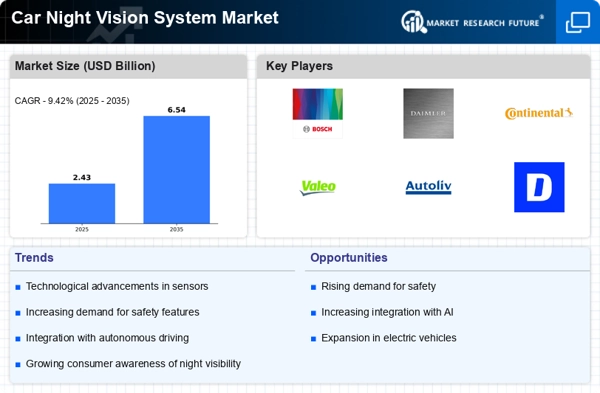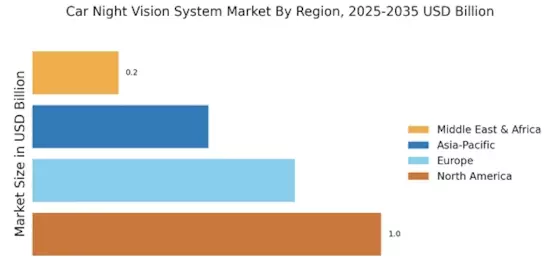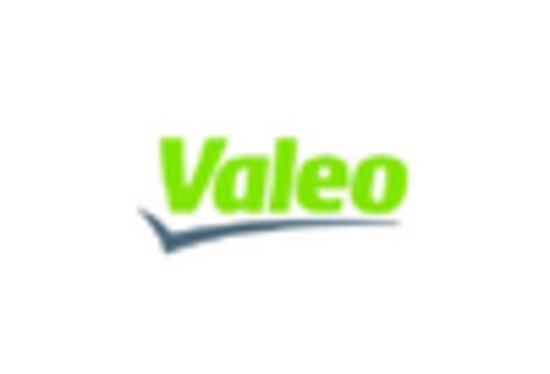Increased Focus on Safety Regulations
The Car Night Vision System Market is significantly influenced by the heightened focus on safety regulations across various regions. Governments are implementing stricter safety standards for vehicles, which include the incorporation of advanced driver assistance systems (ADAS). Night vision systems are becoming a crucial component of these regulations, as they contribute to reducing nighttime accidents. The market is expected to expand as manufacturers strive to comply with these regulations, leading to an increase in the adoption of night vision technologies. This trend indicates a potential shift in consumer preferences towards vehicles equipped with enhanced safety features.
Rising Incidence of Nighttime Accidents
The Car Night Vision System Market is significantly impacted by the rising incidence of nighttime accidents. Statistics indicate that a substantial percentage of traffic fatalities occur during night hours, highlighting the need for improved visibility solutions. Night vision systems can play a crucial role in mitigating these risks by providing drivers with enhanced visibility in dark conditions. As awareness of these safety benefits grows, the market is expected to expand, with more consumers opting for vehicles equipped with night vision technology. This trend suggests a proactive approach to addressing nighttime driving hazards.
Consumer Demand for Enhanced Driving Experience
The Car Night Vision System Market is also driven by the growing consumer demand for an enhanced driving experience. As consumers become more discerning, they seek vehicles that offer advanced features, including night vision capabilities. This demand is particularly evident among luxury vehicle segments, where night vision systems are increasingly viewed as a standard feature rather than an optional add-on. The market is likely to see a rise in the adoption of these systems as manufacturers respond to consumer preferences, potentially leading to a broader acceptance of night vision technology across various vehicle categories.
Integration with Autonomous Driving Technologies
The Car Night Vision System Market is poised for growth due to the integration of night vision systems with autonomous driving technologies. As the automotive industry moves towards automation, the need for reliable perception systems becomes paramount. Night vision systems enhance the capabilities of autonomous vehicles by providing critical information about the environment in low-light conditions. This integration is likely to drive demand for night vision technologies, as manufacturers seek to develop vehicles that can operate safely in all lighting conditions. The market may witness a significant increase in investments aimed at research and development in this area.
Technological Advancements in Night Vision Systems
The Car Night Vision System Market is experiencing a surge in technological advancements, particularly in infrared and thermal imaging technologies. These innovations enhance visibility during low-light conditions, thereby improving overall driving safety. The integration of high-definition cameras and advanced sensors allows for better detection of pedestrians and animals on the road. As a result, the market is projected to grow at a compound annual growth rate of approximately 10% over the next five years. This growth is driven by the increasing demand for enhanced safety features in vehicles, as consumers become more aware of the benefits of night vision systems.

















Leave a Comment